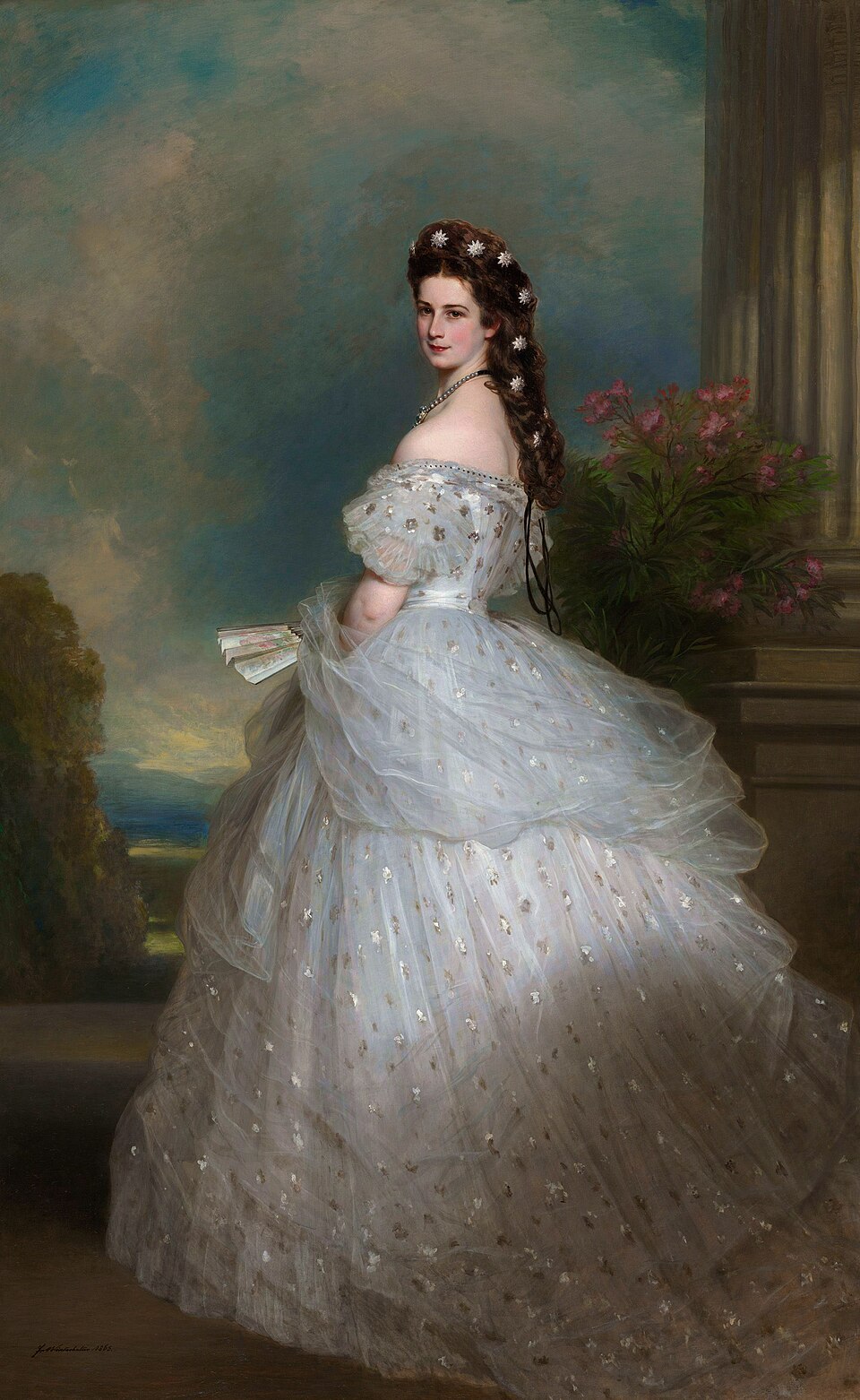Today, the name Charles Worth is known only to fashion historians and devoted enthusiasts. Yet this “forgotten” couturier forever transformed the world of fashion, laying the foundations for the industry as we know it. He was the first globally celebrated designer, a creative visionary who didn’t merely craft dresses to clients’ orders but anticipated trends and set the standard for high fashion. Charles Worth was a true revolutionary whose legacy endures.
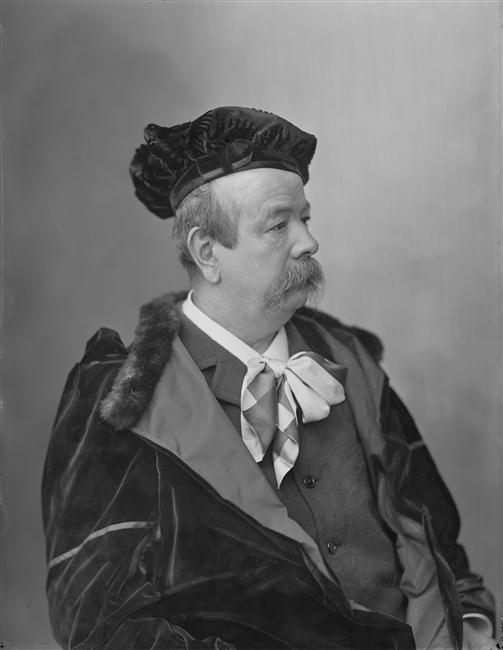
Charles Frederick Worth, 1892
Childhood and Youth
Charles Frederick Worth was born on October 13, 1825, in the small English town of Bourne. His family was relatively affluent, but when Charles was 11, their fortunes crumbled due to his father’s struggles with alcoholism and gambling. Forced to work at a young age, Charles entered the world of fashion, first at Swan & Edgar, a supplier of fabrics for women’s clothing, and later at Lewis & Allenby, a London silk merchant.
In his spare time, young Charles frequented the National Gallery in London, where he spent hours admiring the opulent attire of society ladies and royalty. He sketched their costumes, dreaming of one day joining their elite world.
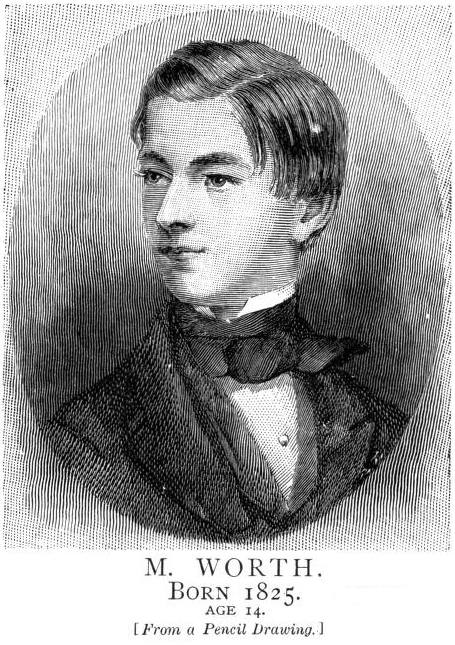
Charles Worth at age 14, 1839
In 1845, an ambitious 20-year-old Worth set out to conquer Paris, the undisputed capital of fashion. He secured a position at Maison Gagelin, a renowned firm dealing in fabrics, ready-to-wear garments, and accessories. Diligent and talented, Charles swiftly rose from salesman to head of the couture department. Here, he gained creative freedom and designed his first dresses, which captivated Parisian society. Worth’s creations were showcased at the World’s fair in London (1851) and Paris (1855), earning awards that bolstered the reputation of both Maison Gagelin and the designer himself.
The Path to Fame
This success enabled Worth, in 1858, to open the world’s first haute couture house with the backing of business partner Otto Bobergh. At the time, securing a financier for a fashion venture was a bold gamble, but Worth’s triumph established this model as an fashion industry standard. Initially named Worth & Bobergh, the house was later rebranded as House of Worth after Worth bought out his partner’s share.
By then, the 33-year-old couturier was married with two children. He had met his wife, Marie Vernet, at Maison Gagelin, where they both worked. Marie became not only his partner but also a saleswoman, presenting dresses to clients in her husband’s salon.
One day, Princess Pauline von Metternich visited Worth’s salon. Captivated by the exquisite designs and Marie’s charisma, she ordered a gown for a ball. The dress, crafted by Worth for the princess, dazzled Empress Eugénie, wife of Napoleon III. Enchanted by its splendor, she promptly summoned the couturier to the palace, requesting an equally magnificent gown.
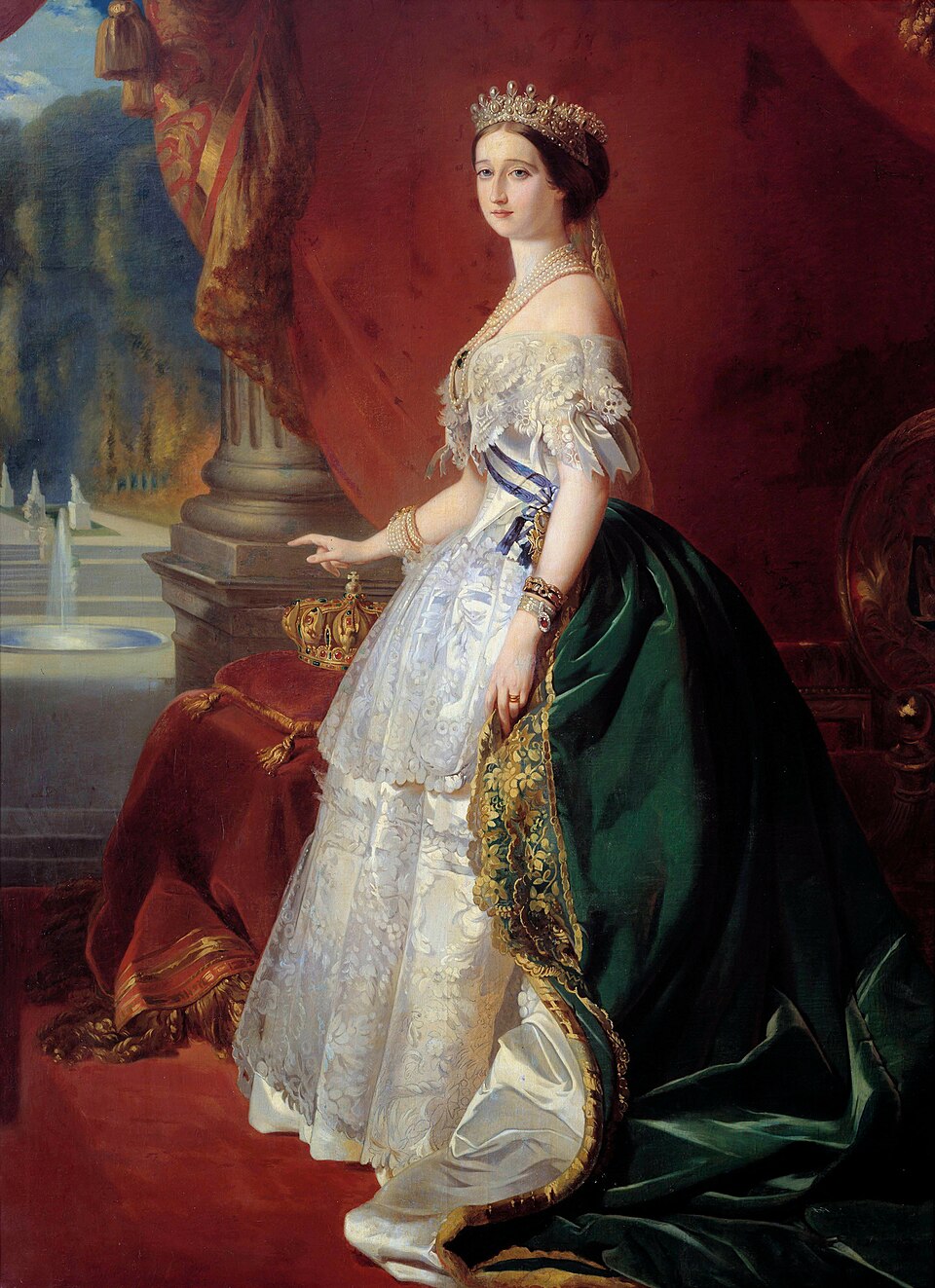
Empress Eugénie wearing a gown by Charles Worth, 1853
From that moment, Charles Worth became the official designer to the Empress of France. His fame spread rapidly across Europe, attracting aristocrats and royalty, including Empress Elisabeth of Austria and members of Imperial Russia’s elite. Worth was the first couturier whose dresses were exported to America, where they were adored by actresses and socialites.

Court dress from the era of Imperial Russia, 1888
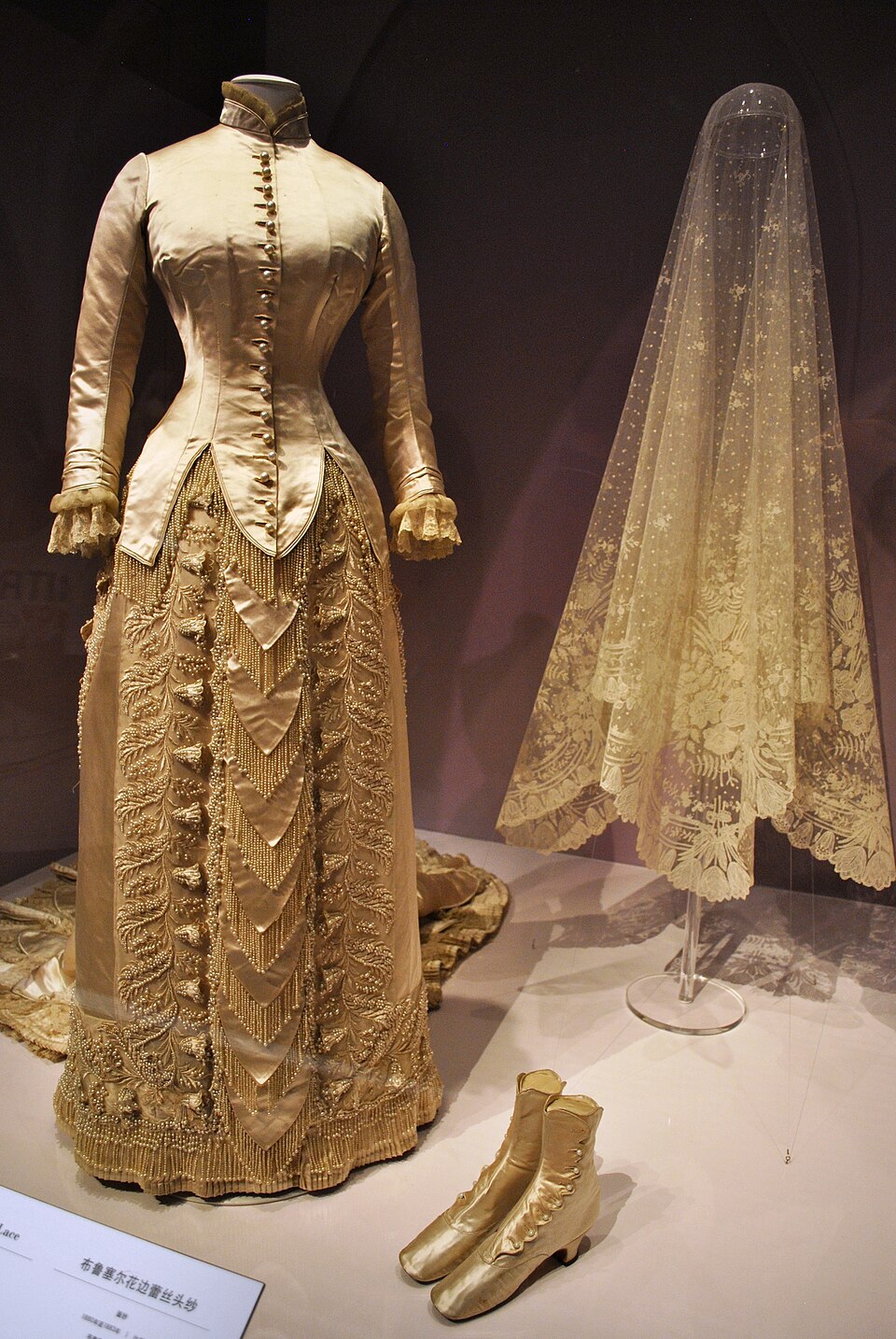
Wedding dress for wealthy American Clara Mathews, 1880
Photo: Elisa.rolle
Inventing the Fashion Industry
Charles Frederick Worth revolutionized fashion by simplifying silhouettes and eschewing excessive frills in favor of elegant, structured forms. He emphasized the quality of fabrics and craftsmanship, creating refined dresses that highlighted individuality and modernity.
Worth was the first to replace fashion dolls with live models, inventing the precursor to the modern fashion show. He also introduced seasonal collections, a practice standard in today’s industry: models in his salon showcased dresses available for order six months later. Each gown bore a label with the designer’s name—now a standard practice, then a revolutionary innovation.
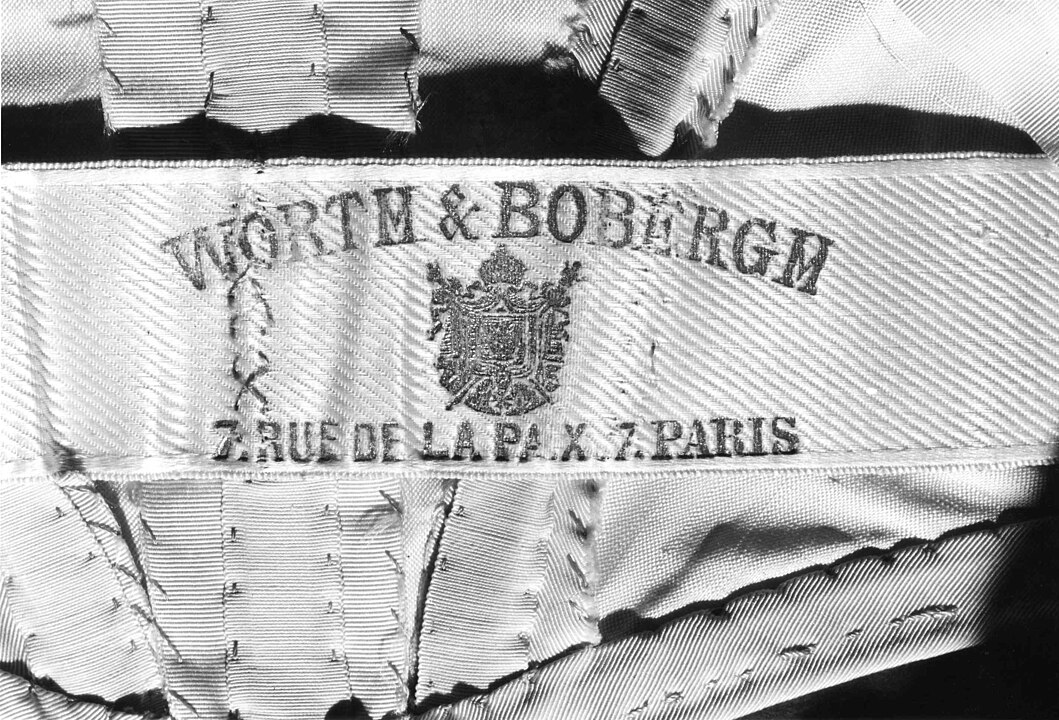
Label of the Worth & Bobergh couture house
In 1868, Worth founded the Syndicate of High Fashion (Chambre Syndicale de la Couture Parisienne), cementing his title as the “father of haute couture.” This organization protected couturiers’ interests, combated design piracy, and established haute couture standards, such as exclusivity and the predominance of handcrafted work. The Syndicate operates to this day, and only brands meeting its rigorous criteria may claim the haute couture designation.
The Legacy of Charles Worth
Charles Worth passed away on March 10, 1895, at the age of 69. His sons, Gaston Lucien and Jean Philippe, carried on his work. Jean Philippe became the creative director, preserving his father’s aesthetic: sumptuous fabrics, intricate detailing, and gowns for the elite.
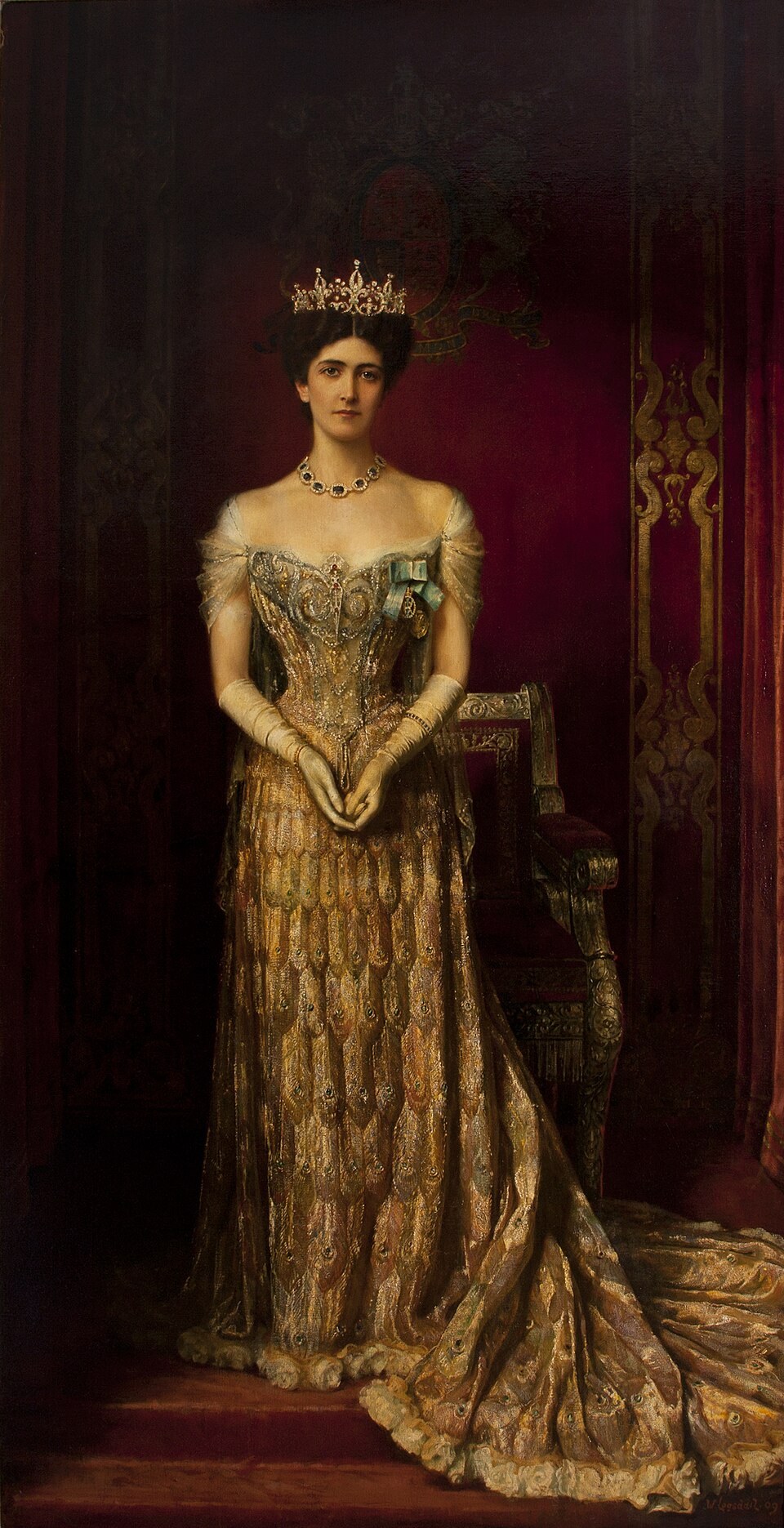
Mary Victoria Curzon in a gown by Jean-Philippe Worth, 1903
The House of Worth thrived until the 1920s, but shifting fashion paradigms and rising competition made its survival increasingly difficult. In 1956, the House of Worth closed its doors, leaving an indelible legacy in the fashion world. Today, a gallery dedicated to Worth’s life operates in his hometown of Bourne, housing archival photographs, documents, and artifacts.
